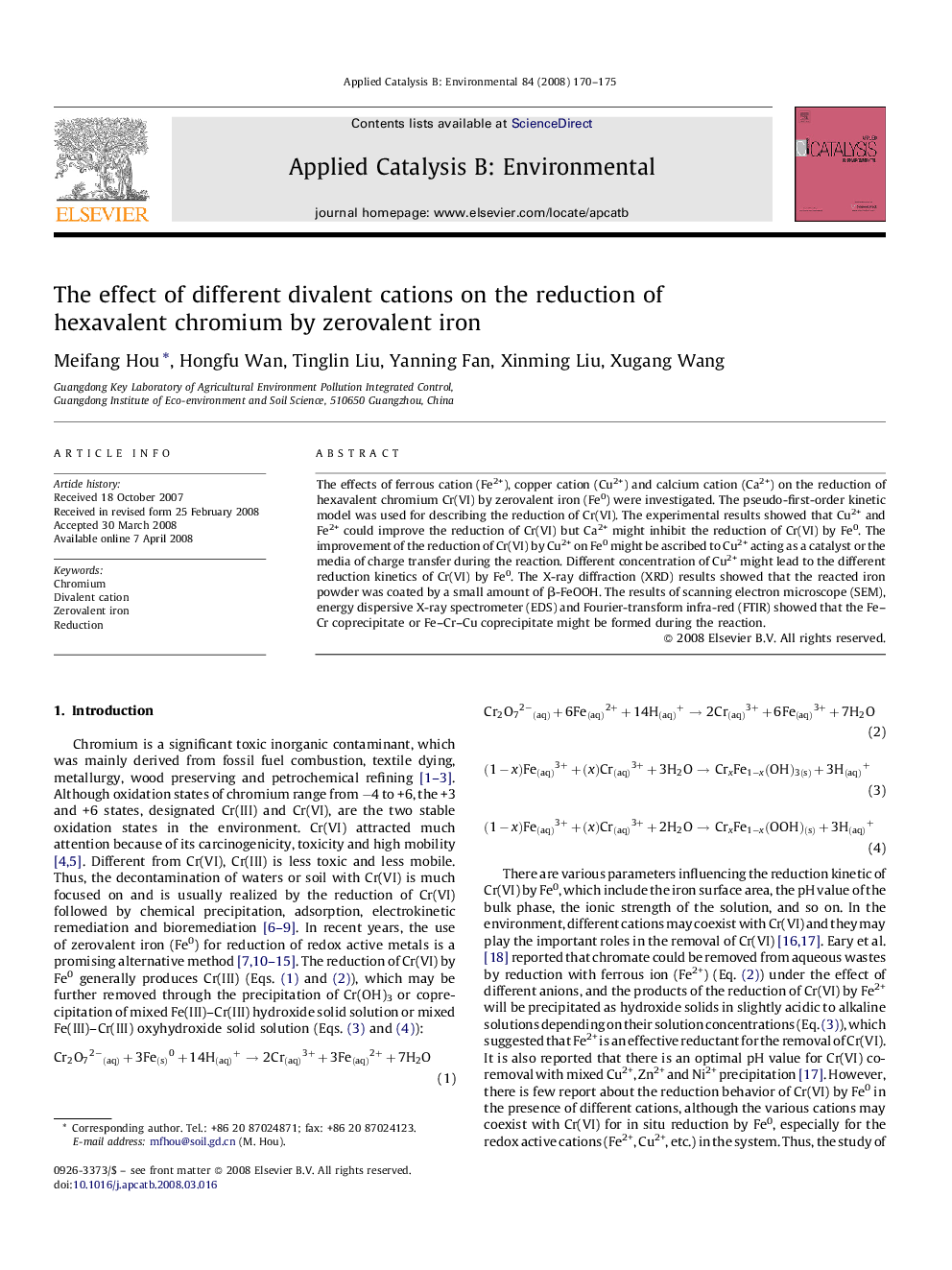| Article ID | Journal | Published Year | Pages | File Type |
|---|---|---|---|---|
| 47908 | Applied Catalysis B: Environmental | 2008 | 6 Pages |
The effects of ferrous cation (Fe2+), copper cation (Cu2+) and calcium cation (Ca2+) on the reduction of hexavalent chromium Cr(VI) by zerovalent iron (Fe0) were investigated. The pseudo-first-order kinetic model was used for describing the reduction of Cr(VI). The experimental results showed that Cu2+ and Fe2+ could improve the reduction of Cr(VI) but Ca2+ might inhibit the reduction of Cr(VI) by Fe0. The improvement of the reduction of Cr(VI) by Cu2+ on Fe0 might be ascribed to Cu2+ acting as a catalyst or the media of charge transfer during the reaction. Different concentration of Cu2+ might lead to the different reduction kinetics of Cr(VI) by Fe0. The X-ray diffraction (XRD) results showed that the reacted iron powder was coated by a small amount of β-FeOOH. The results of scanning electron microscope (SEM), energy dispersive X-ray spectrometer (EDS) and Fourier-transform infra-red (FTIR) showed that the Fe–Cr coprecipitate or Fe–Cr–Cu coprecipitate might be formed during the reaction.
